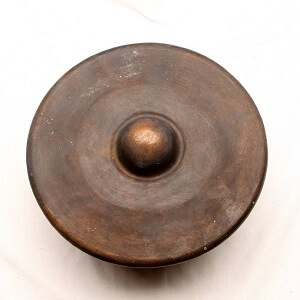Babendil
 Babandil or Babendil is a narrow-rimmed gong that is primarily used in the Maguindanao kulintang ensemble as a timekeeper. It has several names that vary depending on the region, such as babendir in Maguindanao, and Babndir for the Maranao people. For other Southern Philippine groups, the babendil is called bandil, babendil, babendil, and bapindil. However, the origin of this instrument could be traced from the Indian subcontinent or the Middle-East.
Babandil or Babendil is a narrow-rimmed gong that is primarily used in the Maguindanao kulintang ensemble as a timekeeper. It has several names that vary depending on the region, such as babendir in Maguindanao, and Babndir for the Maranao people. For other Southern Philippine groups, the babendil is called bandil, babendil, babendil, and bapindil. However, the origin of this instrument could be traced from the Indian subcontinent or the Middle-East.
According to scholars, the name Babendil came from the Arabic word ‘bandair,’ which means ‘circular-type tambourine or frame drum. Meanwhile, others suggest that the babendil is related to the Javanese bende or bebende, a gong with similar characteristics to an Indonesian gamelan ensemble. In addition to that, it is also believed that the Babendil has a relation with the Indian kettle drum called behri. In fact, ancient Sanskrit had indicated that the bende was the bronze equivalent of the Indian instrument called behri.
Moreover, the Babendil is a percussion instrument considered as the larger than the largest kulintang gong and has a comparable diameter to agung and gandingan. The gandingan is a Philippine set of four gongs used by the Maguindanao people. It is a gong with a shallow boss, thin rims, and was hung vertically in a strong frame stand. When played in an ensemble, the gandingan functions as a secondary melodic instrument; however, it is used to communicate, send messages, and warnings with fellow Maguindanao when it was played in solo. Meanwhile, an agung is a set of two wide-rimmed gongs that produces a bass sound used by the Maguindanao, Maranao, Tausug, and Sama-Badjau people.